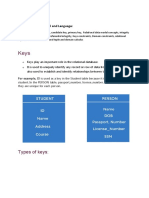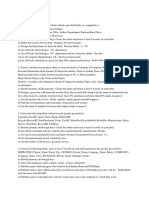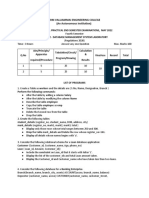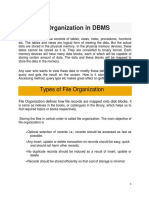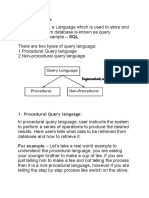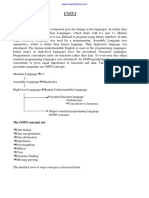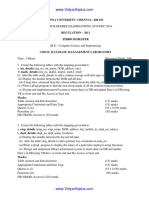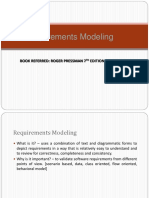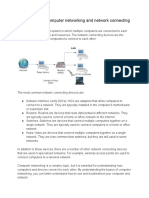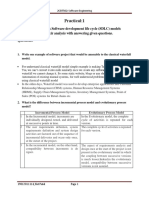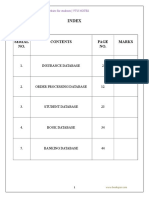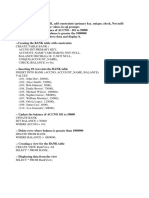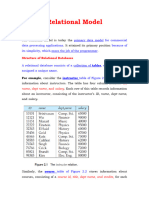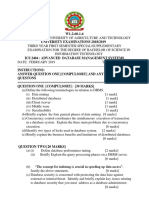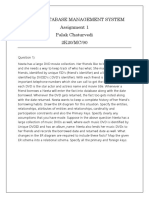0% found this document useful (0 votes)
963 views16 pagesRelational Model
The document provides an overview of the relational model in database management systems. It defines key concepts like relations, attributes, tuples, schemas, and how data is logically organized into tables despite being physically stored independently. It also defines common relational model terms like attribute, table, tuple, relation schema, degree, cardinality, column, relation instance, and attribute domain.
Uploaded by
Tech force hindiCopyright
© © All Rights Reserved
We take content rights seriously. If you suspect this is your content, claim it here.
Available Formats
Download as DOCX, PDF, TXT or read online on Scribd
0% found this document useful (0 votes)
963 views16 pagesRelational Model
The document provides an overview of the relational model in database management systems. It defines key concepts like relations, attributes, tuples, schemas, and how data is logically organized into tables despite being physically stored independently. It also defines common relational model terms like attribute, table, tuple, relation schema, degree, cardinality, column, relation instance, and attribute domain.
Uploaded by
Tech force hindiCopyright
© © All Rights Reserved
We take content rights seriously. If you suspect this is your content, claim it here.
Available Formats
Download as DOCX, PDF, TXT or read online on Scribd
/ 16

